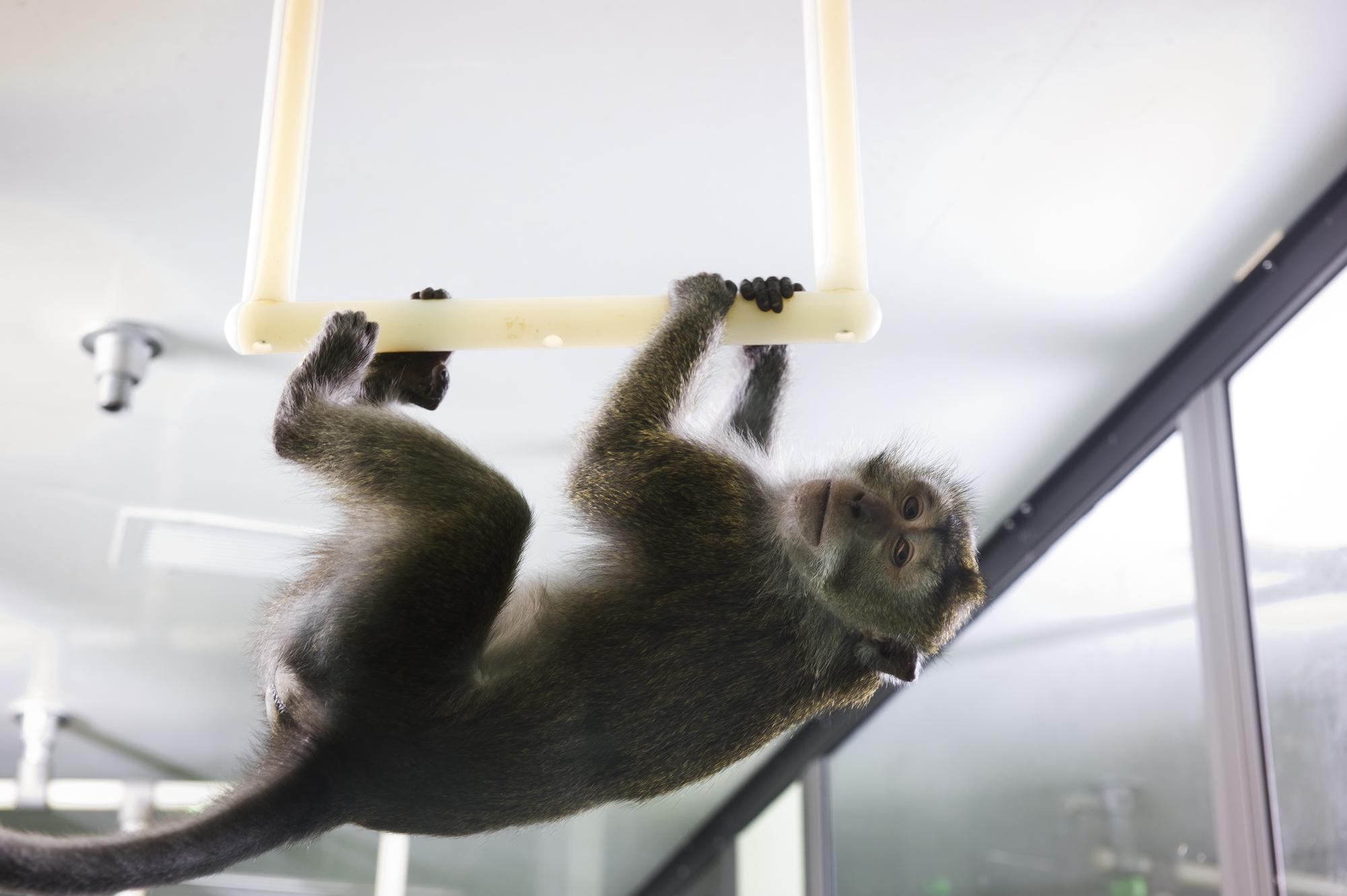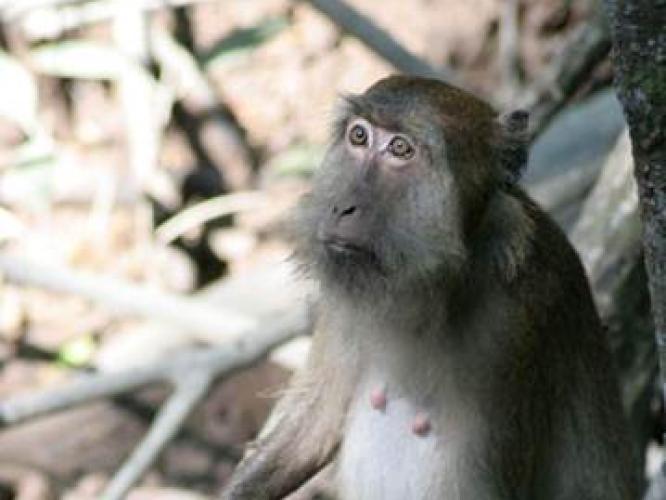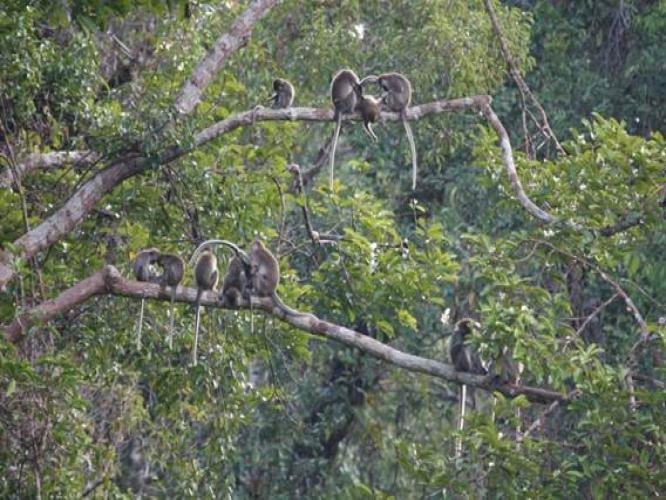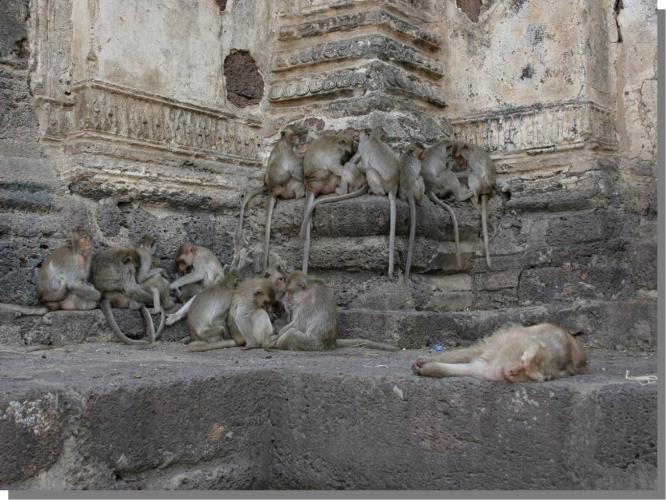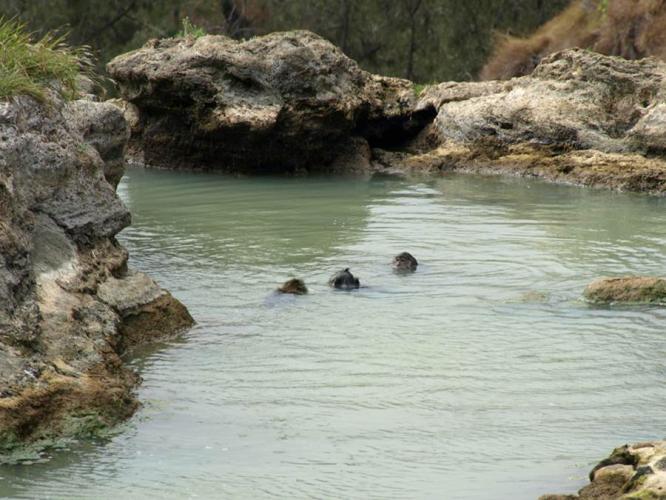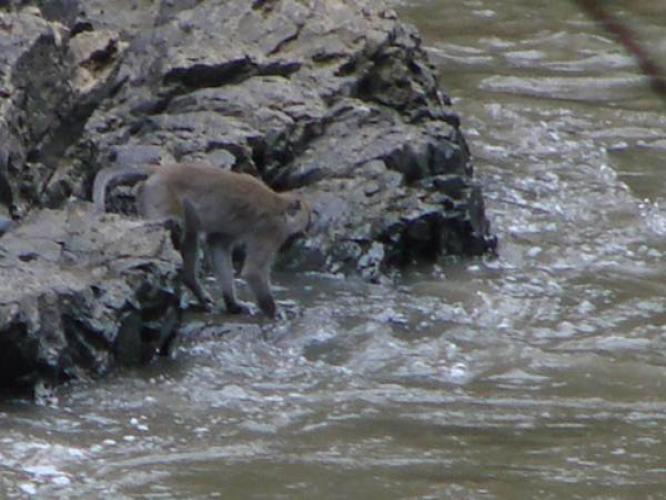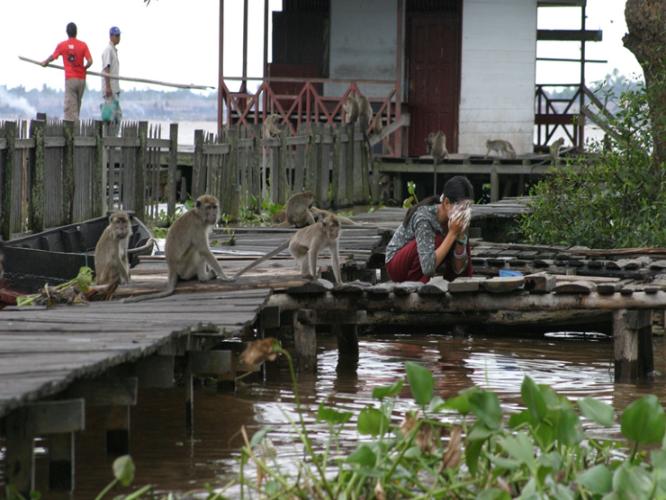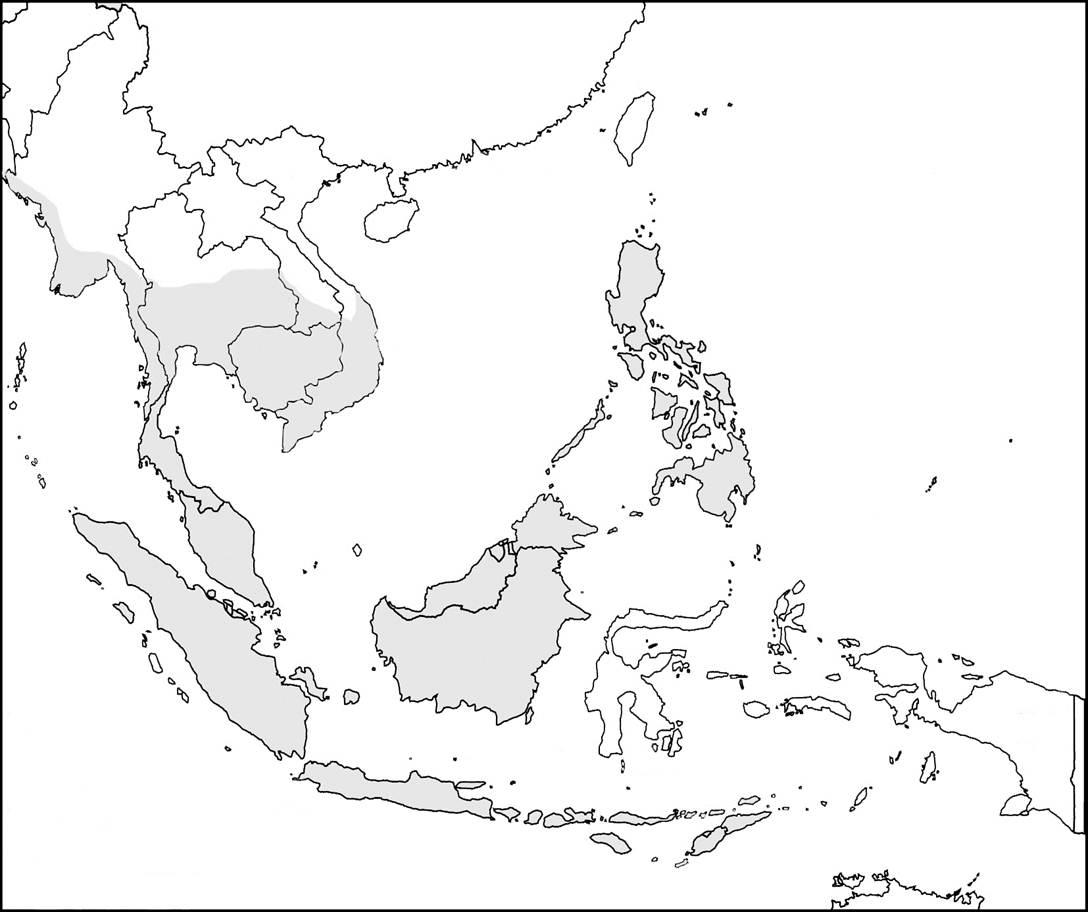Also called crab-eating, long-tailed macaques, or Macaca fascicularis in latin. There are ten sub-species of cynomologus macaques. They appear on the IUCN Red List of threatened species and have been categorised as ‘Endangered‘.
References
-
Wheatley BP (1999). The sacred monkeys of bali, 1st edition. Waveland Press.
- Fooden J (2006). Comparative review of fascicularis-group species of macaques (primates: Macaca). Fieldiana Zoology 107: 1-43
-
Poirier FE and Smith EO (1974). The crab-eating macaques (macaca fascicularis) of angaur island, palau, micronesia. Folia Primatologica 22(4): 258-306. https://doi.org/10.1159/000155631
-
Fittinghoff NA and Lindberg DG (1980). Riverine refuging in eastern bornean macaca fascicularis. In: The macaques: Studies in ecology, behavior and evolution (Ed., Lindber DG) (1 ed., pp. 182-214). Van Nostrand Reinhold.
-
Kyes RC (1993). Survey of the long-tailed macaques introduced onto tinjil island, indonesia. American Journal of Primatology 31(1): 77-83. https://doi.org/10.1002/ajp.1350310108
-
Stanley M-A and Griffiths OL (1997). Supplying primates for research. In: Conservation and the use of wildlife resources (Ed., Bolton M) (pp. 191-8). Springer Netherlands. https://doi.org/10.1007/978-94-009-1445-2_11
-
Ong P and Richardson M (2008). Macaca fascicularis. In the IUCN Red List of Threatened Species. Version 2015.2.
-
Groves C (2001). Primate taxonomy, 1st edition. Smithsonian Institution Press.
-
Nowak RM (1999). Walker's primates of the world, 1st and 2nd edition., Vol. 6. John Hopkins University Press.
-
Rodman PS (1991). Structural differentiation of microhabitats of sympatric macaca fascicularis and m. Nemestrina in east kalimantan, indonesia. International Journal of Primatology 12.
-
Gumert MD (2011). The status and distribution of long-tailed macaques. In: Monkeys on the edge ecology and management of long-tailed macaques and their interface with humans (Eds. Gumert MD, Fuentes A, and Jones-Engel L) (pp. 1-44). Cambridge Univ Pr..
-
Sussman RF et al. (2011). Macaca fascicularis in mauritius: Implications for macaque–human interactions and for future research on long-tailed macaques. In: Monkeys on the edge ecology and management of long-tailed macaques and their interface with humans (Eds. Gumert MD, Fuentes A, and Jones-Engel L) (1 ed., pp. 207-35). Cambridge University Press.
-
Supriatna J et al. (1996). A preliminary survey of long-tailed and pig-tailed macaques (macaca fascicularis and macaca nemestrina) in lampung, bengkulu, and jampi provinces, southern sumatera, indonesia. Tropic Biodiv 3(2): 131-40.
-
van Schaik CP et al. (1996). Riverine refuging by wild sumatran long-tailed macaques (macaca fascicularis). In: Evolution and ecology of macaque societies. (Eds. Fa JE and Lindburg DG) (pp. 160-81). Cambridge Univ Pr.
-
Wheatley BP (1980). Feeding and ranging of east bornean macaca fascicularis. In: The macaques: Studies in ecology, behavior, and evolution (Ed., Lindburg DG) (pp. 215-46). Van Nostrand Reinhold.
-
Sussman RW and Tattersall I (1981). Behavior and ecology of macacafascicularis in mauritius: A preliminary study. Primates 22: 192-205.
-
Sussman RW and Tattersall I (1986). Distribution, abundance, and putative ecological strategy of macaca fascicularis on the island of mauritius, southwestern indian ocean. Folia Primatologica 46(1): 28-43. doi: 10.1159/000156234
-
Yeager CP (1996). Feeding ecology of the long-tailed macaque (macaca fascicularis) in kalimantan tengah, indonesia. International Journal of Primatology 17.
-
Lucas PW and Corlett RT (1999). Seed dispersal by long‐tailed macaques. American Journal of Primatology 45(1): 29-44. doi: 10.1002/(SICI)1098-2345(1998)45:1<29::AID-AJP4>3.0.CO;2-Y
-
Son VD (2003). Diet of macaca fascicularis in a mangrove forest, vietnam. Laboratory Primate Newsletter 42(4): 1-5.
-
Gurmaya KJ et al. (1994). A preliminary study on ecology and conservation of the java primates in ujung kulon national park, west java, indonesia. In: Current primatology. Volume 1, ecology and evolution. (Eds. Thierry B, Anderson JR, Roeder JJ, and Herrenschmidt N) (Vol. 1, pp. 87-92). Univ Louis Pasteur.
-
Son VD (2004). Time budgets of macaca fascicularis in a mangrove forest, vietnam. Laboratory Primate Newsletter 43(3): 1-4.
-
Angst W (1975). Basic data and concepts on the social organization of macaca fascicularis. In: Primate behavior: Developments in field and laboratory research (Ed., Rosenblum LA) (Vol. 4, pp. 325-88). Academic Press.
-
de Jong G et al. (1994). Genetic structure of a population with social structure and migration. In: Conservation genetics (Eds. Loeschcke V, Tomiuk J, and Jain SK) (1st edition., pp. 147-64).
-
Van Noordwljk MA and Van Schaik CP. (1999). The effects of dominance rank and group size on female lifetime reproductive success in wild long-tailed macaques, macaca fascicularis.
-
Engelhardt A et al. (2004). Assessment of female reproductive status by male longtailed macaques, macaca fascicularis, under natural conditions. Animal Behaviour 67(5): 915-24.



